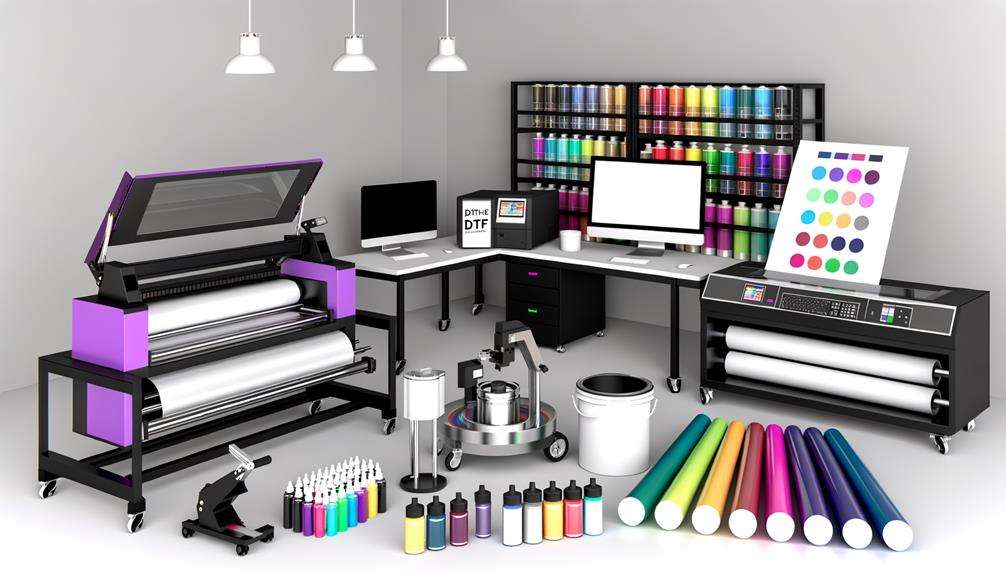
“Direct to Film vs Direct to Garment: Which Is Better?”
Introduction
In the world of custom apparel, two printing methods have significantly risen in popularity: Direct to Film (DTF) and Direct to Garment (DTG). Both techniques offer unique advantages and are favored for different applications. However, the question remains—“Direct to Film vs Direct to Garment: Which Is Better?” This article dives deep into these two printing methods, comparing their processes, benefits, drawbacks, and real-world applications.
Direct to Film Printing
What is DTF Printing?
Direct to Film (DTF) printing is a relatively new technology that allows for high-quality prints on textiles. In this process, designs are printed onto a special film using an inkjet printer equipped with DTF inks. Once the print is done, it undergoes a heat transfer process where the design is applied directly onto the garment.
Advantages of DTF Transfers
The Process of DTF Printing
Best DTF Printer Options
When it comes to selecting the DTF transfer designs best DTF printer, options vary based on budget and needs:
- Epson SureColor F-Series
- Mimaki UJF Series
- Roland VersaUV
These printers cater to both professionals and hobbyists aiming for quality outputs.
Direct to Garment Printing
What is DTG Printing?
Direct to Garment (DTG) printing is another modern technique used for creating vibrant designs on fabric. Unlike DTF which uses film as an intermediary step, DTG prints directly onto the garment using specialized inkjet technology.
Benefits of DTG Printing
The Process of DTG Printing
Limitations of DTG Printing
While DTG has many advantages, it does come with several limitations:
Comparative Analysis of DTF vs DTG
Quality Comparison
Both methods produce high-quality prints but in different ways:
- DTF: Offers vibrant colors and durability suitable for various fabric types.
- DTG: Excels in detailed designs but may not perform well on synthetic fabrics.
Speed and Efficiency
In terms of speed:
- DTF: Generally faster as multiple transfers can be created at once using gang sheets.
- DTG: Slower since each piece must be individually pre-treated and printed.
Cost Analysis
The cost implications differ significantly:
- DTF: Lower initial investment but additional costs for films and powders might apply per print run.
- DTG: Higher upfront cost due to specialized printers but no need for extra materials per print.
Direct to Film vs Direct to Garment: Which Is Better?
So now we’re back at our original question—“Direct to Film vs Direct to Garment: Which Is Better?” Ultimately, it boils down to your specific needs:
If you're looking for versatility across different materials or need bulk production quickly without sacrificing quality, then DTF may be your best bet! On the other hand, if you're focused on intricate designs primarily on cotton fabrics and are willing to invest in slightly higher initial costs while accepting slower production speeds, then DTG could serve you well!


FAQs
1. What materials can I use with DTF printing?
You DTF transfer printing can use various materials including cotton, polyester blends, nylon, leather, etc., making DTF highly versatile compared to other printing methods.
2. Can I wash garments printed using either method?
Yes! Both methods produce durable prints that withstand multiple DTF transfer sheets washes; however, proper care instructions should always be followed.
3. Is there a minimum order requirement for either method?
Typically no minimum DTF transfers orders are required; both methods allow you to create single custom pieces effectively!

4. How do I choose between DTF and DTG?
Consider your project requirements such as material type, detail resolution needed in your design, production speed preferences, and budget constraints before making a decision!
5. Are there any specific maintenance requirements for printers?
Indeed! Regular cleaning cycles depend upon usage frequency; maintaining print heads ensures optimal performance regardless of whether you're working with a direct-to-film printer or direct-to-garment printer!
6. Can I get wholesale pricing on transfers?
Absolutely! Many companies offer wholesale pricing on bulk orders of both DTF transfers as well as custom prints made via DTG processes!
Conclusion
In conclusion—whether you choose “Direct to Film vs Direct to Garment,” each method has its strengths tailored towards different applications within custom apparel printing realms! By understanding your unique requirements—be it material versatility offered by DTF or high-detail capabilities provided through DTG—you'll make an informed decision that aligns best with your creative vision!
Remember that investing time into exploring both t-shirt printing options will empower you not only as an artist but also enhance customer satisfaction by delivering quality products tailored specifically around their needs!